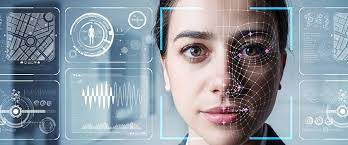Introduction
In a world that is becoming increasingly digital, the need for robust security measures has never been more critical. Traditional methods of identity verification, such as passwords and PINs, are no longer sufficient to protect sensitive information. Biometrics, a rapidly evolving technology category, offers a groundbreaking solution by leveraging unique human characteristics for identification and authentication purposes. This article delves into the world of biometrics, highlighting its applications, advancements, and the future potential of this transformative technology.
Understanding Biometrics
Biometrics refers to the measurement and analysis of physical or behavioral characteristics that are unique to each individual. These characteristics can include fingerprints, facial features, iris or retinal patterns, voice, and even gait. Biometric systems capture and convert these traits into digital data, creating a biometric template or signature that is stored securely for future comparison and authentication.
Applications of Biometrics
- Identity Verification: Biometric authentication provides a highly accurate and secure method of verifying an individual’s identity. It is widely used in various sectors, including banking, government services, healthcare, and law enforcement. With biometrics, individuals can access their devices, secure online accounts, or authorize financial transactions using their unique biological features.
- Physical Access Control: Biometric technology is extensively employed for controlling access to sensitive areas. It has replaced traditional key-based systems in numerous organizations, ensuring that only authorized individuals gain entry. Biometric access control enhances security by preventing unauthorized access through stolen or duplicated credentials.
- Border Control and Immigration: Biometrics plays a pivotal role in border control and immigration processes. Countries worldwide are adopting biometric systems to verify the identities of travelers, enhancing security and streamlining immigration procedures. Facial recognition, fingerprints, and iris scans are commonly used for quick and accurate identification of individuals.
Advancements in Biometrics
- Multimodal Biometrics: To enhance accuracy and reliability, researchers are exploring the integration of multiple biometric modalities. By combining two or more traits, such as fingerprints and facial recognition, multimodal biometric systems provide a more robust and foolproof authentication process.
- Deep Learning and Artificial Intelligence: The advent of deep learning and artificial intelligence has revolutionized the field of biometrics. These technologies enable the development of sophisticated algorithms that can handle large datasets, improve recognition accuracy, and adapt to variations in biometric patterns over time.
- Mobile Biometrics: With the widespread use of smartphones, mobile biometrics has gained significant traction. Built-in fingerprint scanners, facial recognition, and iris scanning capabilities in modern smartphones have made biometric authentication accessible and convenient for users on the go.
The Future of Biometrics
The future of biometrics holds tremendous potential, with several emerging trends and advancements:
- Behavioral Biometrics: In addition to physical traits, behavioral biometrics analyzes patterns in an individual’s behavior, such as typing speed, voice modulation, or mouse movement. This technology can provide continuous authentication, enhancing security and detecting fraudulent activities.
- DNA Biometrics: Scientists are researching the feasibility of using DNA as a unique identifier. DNA-based biometrics could revolutionize forensic investigations, personalized medicine, and identification in scenarios where physical traits are not viable.
- Privacy and Ethical Considerations: As biometric systems become more prevalent, concerns regarding privacy and data security have come to the forefront. Striking a balance between convenience and privacy will be crucial in the future development and deployment of biometric technologies.
Conclusion
Biometrics technology has paved the way for a new era of secure and convenient identification and authentication. From unlocking smartphones to securing borders, its applications are vast and diverse. Advancements in deep learning, multimodal systems, and mobile biometrics have accelerated its adoption and improved accuracy. As technology continues to evolve, addressing privacy concerns and ethical considerations will be essential. With the potential for further innovation, the future of biometrics holds exciting possibilities, promising enhanced security and seamless user experiences across various sectors.


Average Rating